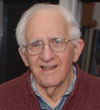
On "Conferences and Exhibitions"
Usually we reserve the technical sessions at [various conferences] for assessing what the new ideas are and where the technology is going. I believe it is equally important to find out at least two more things, the first is whether the new ideas can be made into useful products and the second is whether there is a market. They will comment on these two facts at the technical sessions, but ultimate proof will come only at the exhibition.
Too many engineers consider it beneath their dignity to spend time visiting more than a few booths at technical exhibitions. The fact is that to do more requires discipline, but it is a useful, even important, part of the education process. For anyone in a position of responsibility it is an ideal time to find out in broad but fairly accurate terms, what is happening. For designers, there are many new ideas to explore and a few to explode. For an editor, it is an easy way to see what is happening and to visit with old friends.
On "Who reads MWJ"
I recently reviewed the results of the code-book tabulation [readership study, 1969]. I was surprised to find that the 50 organizations with 100 or more subscribers had a total Microwave Journal reader population of about 14,000. That leaves a population of over 22,000 divided between 2550 organizations.
The needs of this audience places a great burden of responsibility on a publication such as the Microwave Journal. It is one thing to have a large audience. But it is more important, to guarantee to that audience every effort is being exerted to insure the technical integrity of the material published.
From our first issue we have made every possible effort to do so. Our editorial board, our expert reviewers and our stringent review process are well known. The survey only served to remind me that there was no other intelligent and responsible way to publish for our audience, 14,000 in 50 or 22,000 in 2550.
On "Instrumentation, the computer and the manpower shortage"
At the IEEE Show, Hewlett-Packard was using a computer to program microwave test equipment. Using time-sharing techniques along with sweepers, network analyzers, appropriate indicators and suitable microwave circuits, the technique promises that it will dramatically reduce the time required to measure microwave components and circuits, both in design and production test.
With proper instrumentation, and I am convinced the computer is a key element, not only should we be able to increase the output of microwave manpower, but also we should be able to achieve results from sources not previously considered productive. It has been my contention that the faster results are made available to the design engineer, and the more information he can see at a glance, the more effectively he will be able to work.
On "The Individual"
There is a great need to encourage people to be individuals. The herd instinct is strong in many of us, but we are each of us, because of the privacy of our innermost thoughts, first and foremost individuals. Today there is an increasing trend towards reducing all of us to statistics. What is even worse is the phrase we have been guilty of using – “the average engineer." A much better phrase that we would like to promote is – “the individual engineer."
There is much talk about a shortage of engineers, but a shortage that is much more serious is the shortage of individuals. This is true not only of the microwave industry but of society in general. One of the most important things we can do to help young engineers starting out is to make them aware of their fundamental importance and tremendous potential as individual contributors.
